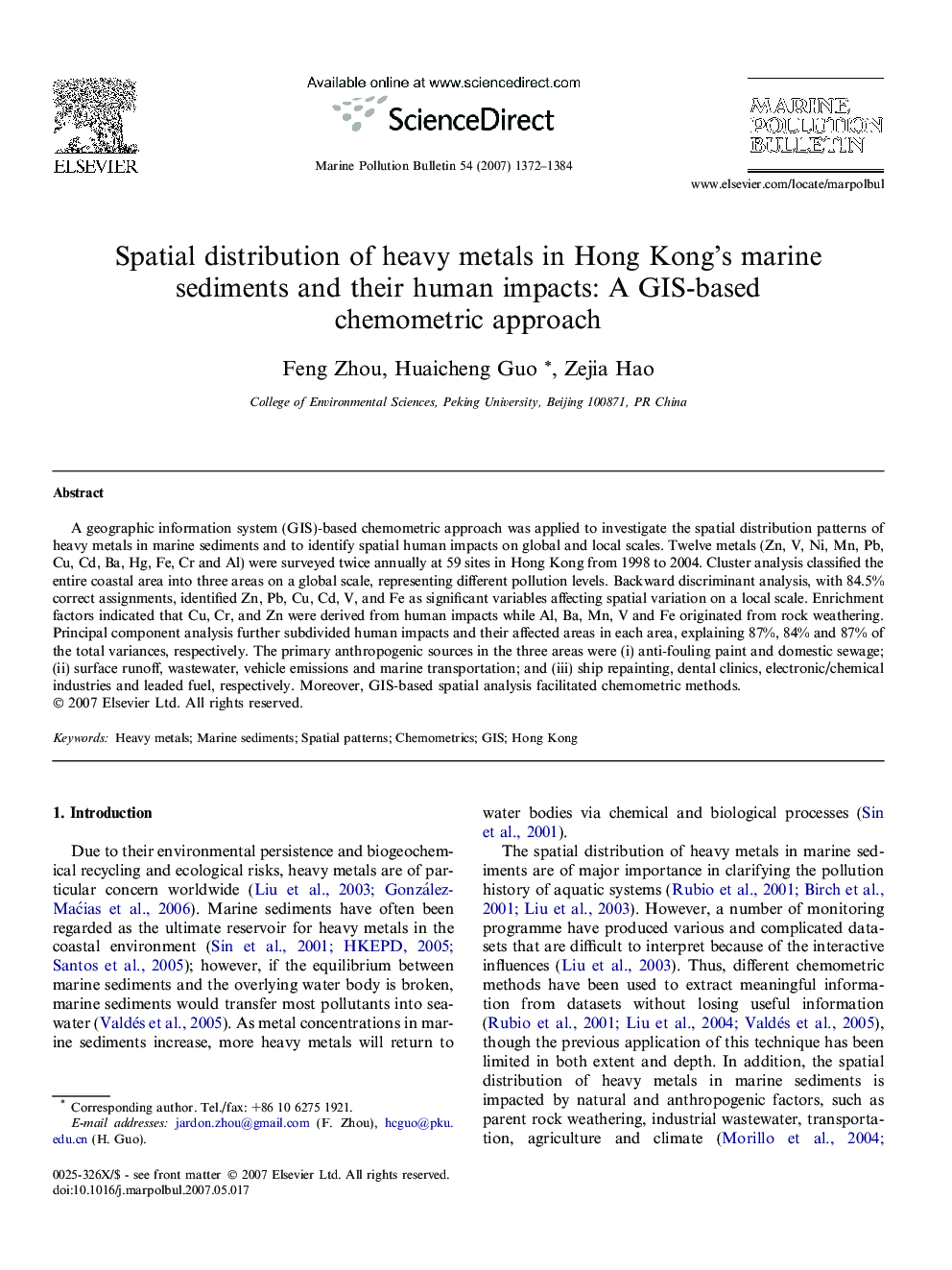| Article ID | Journal | Published Year | Pages | File Type |
|---|---|---|---|---|
| 4477520 | Marine Pollution Bulletin | 2007 | 13 Pages |
A geographic information system (GIS)-based chemometric approach was applied to investigate the spatial distribution patterns of heavy metals in marine sediments and to identify spatial human impacts on global and local scales. Twelve metals (Zn, V, Ni, Mn, Pb, Cu, Cd, Ba, Hg, Fe, Cr and Al) were surveyed twice annually at 59 sites in Hong Kong from 1998 to 2004. Cluster analysis classified the entire coastal area into three areas on a global scale, representing different pollution levels. Backward discriminant analysis, with 84.5% correct assignments, identified Zn, Pb, Cu, Cd, V, and Fe as significant variables affecting spatial variation on a local scale. Enrichment factors indicated that Cu, Cr, and Zn were derived from human impacts while Al, Ba, Mn, V and Fe originated from rock weathering. Principal component analysis further subdivided human impacts and their affected areas in each area, explaining 87%, 84% and 87% of the total variances, respectively. The primary anthropogenic sources in the three areas were (i) anti-fouling paint and domestic sewage; (ii) surface runoff, wastewater, vehicle emissions and marine transportation; and (iii) ship repainting, dental clinics, electronic/chemical industries and leaded fuel, respectively. Moreover, GIS-based spatial analysis facilitated chemometric methods.
